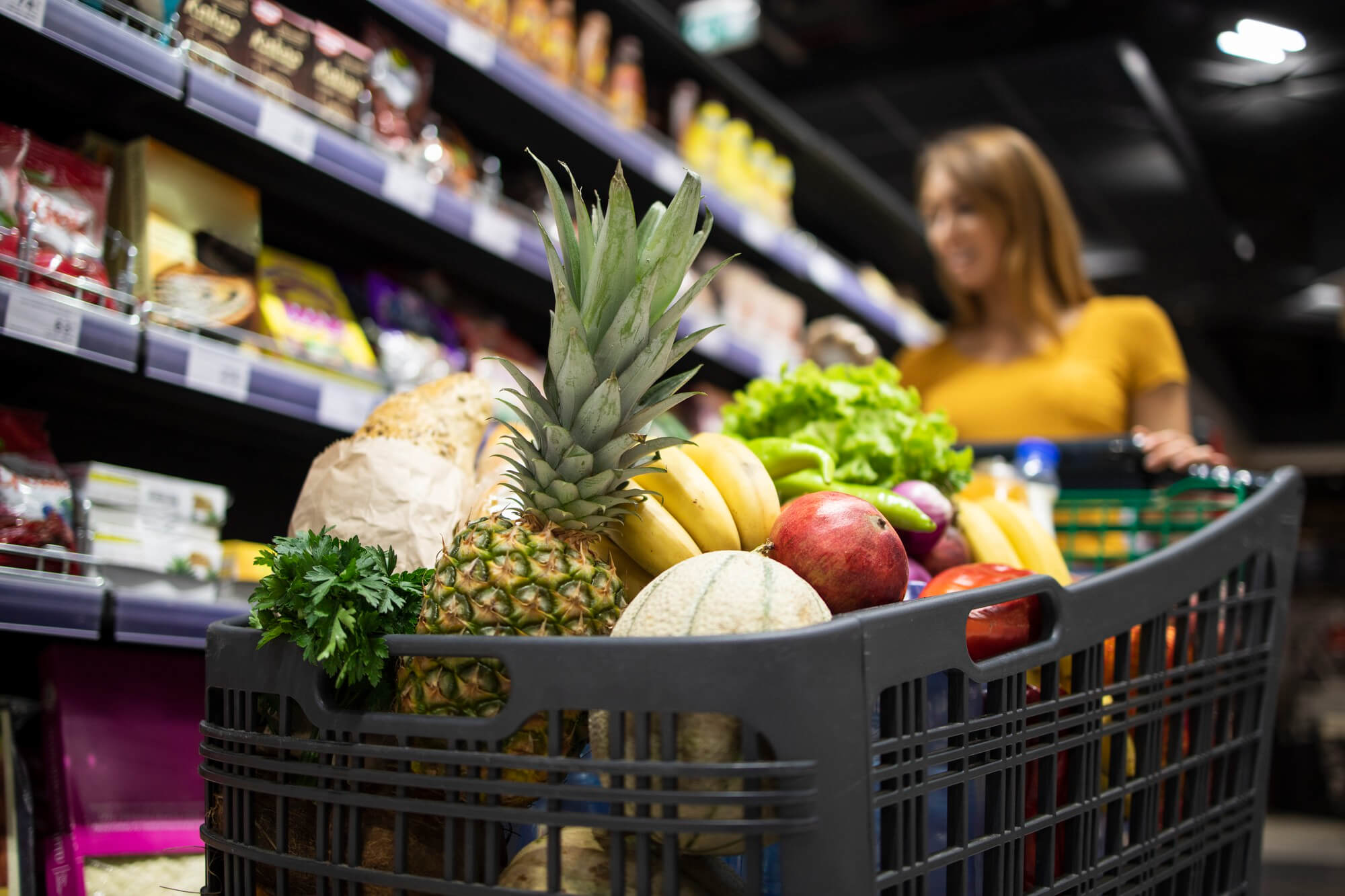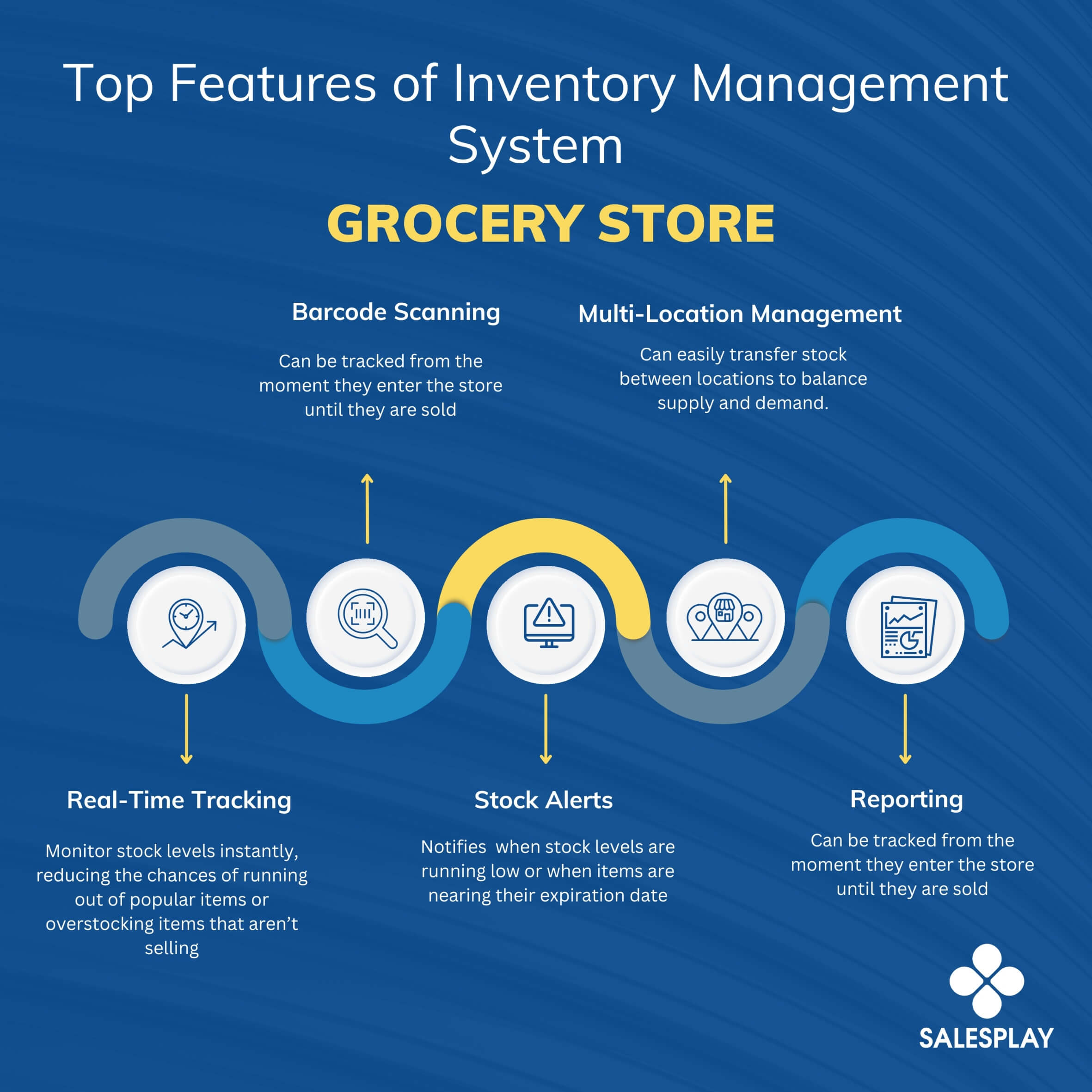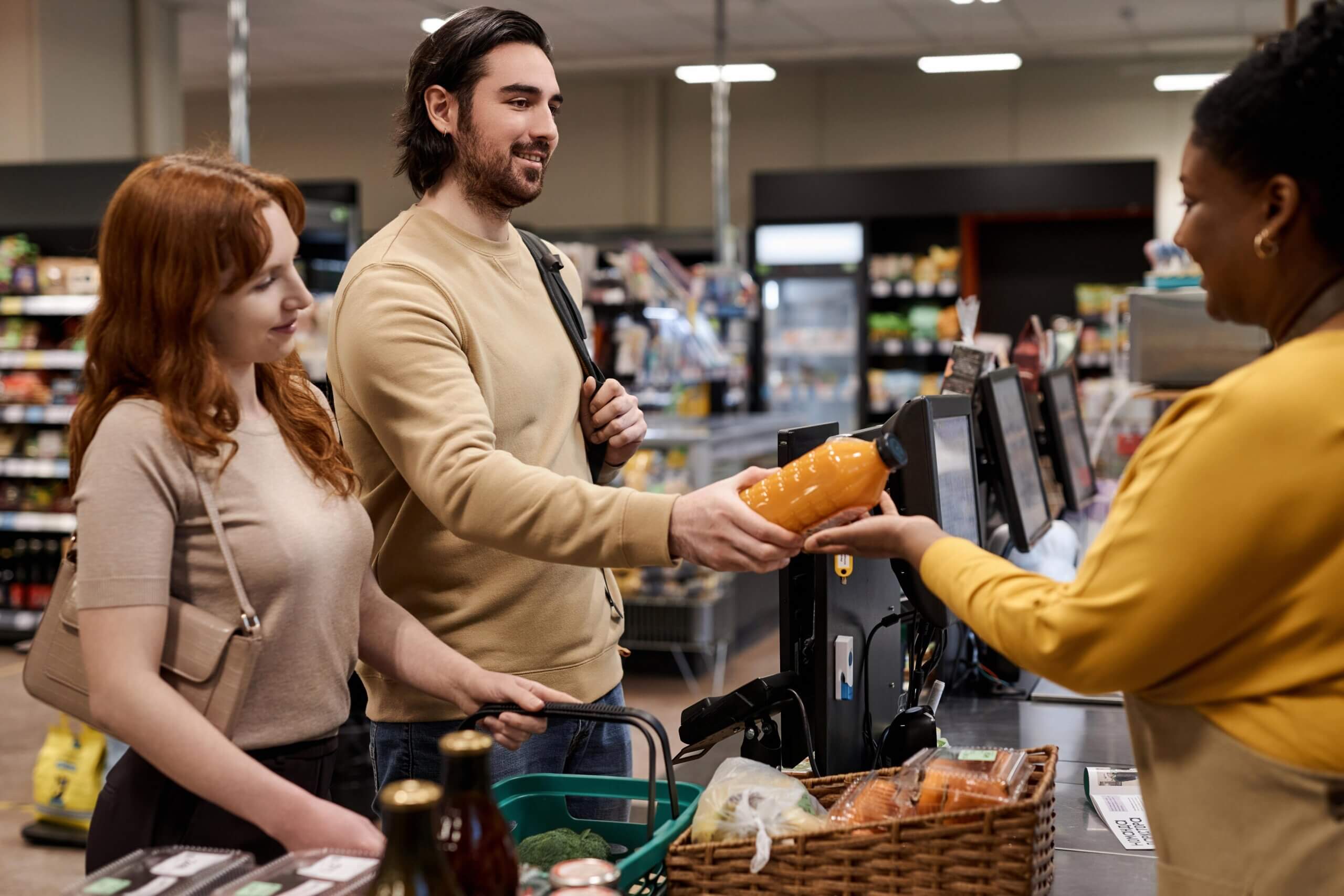A grocery store is a complex business. There are so many moving parts, from stocking shelves and organizing products to maintaining cleanliness and security in the store. However, inventory management is an often-overlooked area.
In fact, most grocery stores do not have an effective inventory control system yet. For good customer experience, it is more important than ever to ensure your products are correctly tracked and managed so that they stay fresh throughout their shelf-life cycle—and this is where a grocery store inventory management system (IMS) comes into play.

An inventory management system helps you track all the stock in your store. It helps you know what to order, when to order it, and how much stock you have on hand at any given time.
With an efficient inventory system, you can ensure smooth product flow, leading to increased sales and an improved shopping experience for your customers.
Thus, effective inventory management is essential for running a successful grocery store. It helps in maintaining accurate records, prevents stockouts and helps keep track of goods movements in multiple grocery store locations. Opting for a grocery store POS system is an ideal solution that makes this possible.
Traditionally, stocks are managed on ledgers or spreadsheets and sometimes involve electronic solutions. Verifying products in the grocery store, their quantity, expiry dates, etc. are all recorded and managed through manual data entry.
This process is not only costly and time-consuming, but human errors can also lead to inaccurate data, resulting in financial and compliance risks.

Thus, a well-managed inventory management in grocery stores and stock control are absolutely essential for the growth. It is a useful tool for gaining insight into critical aspects of your store, such as your financial standing, customer purchase patterns, and future trends.
Maintaining a good stock management system creates an organized grocery store. It allows you to calculate how much inventory you need to keep on hand to avoid customer product shortages. Efficiently managing your grocery store to meet customer demands ensures satisfaction and keeps customers coming back.
Discover smart inventory management system - how it works and types.
Inventory management in grocery stores can be complex, but a smart system simplifies the process. You no longer have to worry about running out of stock or over-ordering.
This system tracks every item in real-time, ensuring shelves stay stocked with the right products at the right time. Whether it’s fresh produce, packaged goods, or cleaning supplies, an automated system keeps everything organized.
Studies show that implementing inventory management systems can reduce grocery store waste by up to 20% . When you know exactly how much of each product is on hand, it helps prevent overstocking or letting perishables spoil.
With real-time inventory tracking, you can make informed decisions on when to reorder, reducing excess inventory. Not only does this improve your bottom line, but it also benefits the environment by cutting down on food waste.
In grocery stores, nothing frustrates customers more than finding empty shelves for their favorite items. With smart grocery store stock management, you’ll always know what’s in stock and what’s running low.

This ensures a smooth shopping experience where customers find what they need. If there’s a sudden demand for a product, the system can quickly alert you, so you can restock before it runs out. Happy customers are more likely to return, and they’ll also spread the word about your efficient service.
Inventory management in grocery stores doesn’t just end with your shelves. A smart system also keeps track of supplier orders, deliveries, and stock levels.
It gives you a complete view of the supply chain, making it easier to forecast demand and prevent delays. By integrating with your suppliers, the system can automatically generate orders based on sales trends, ensuring that your store never runs out of high-demand items.
In short, investing in a smart inventory management system for your grocery store can lead to more efficient operations, reduced waste, and satisfied customers. It’s an essential tool that helps streamline every aspect of your store’s inventory, from shelf stocking to supply chain management.
Managing inventory in grocery stores can be a challenge, but a good inventory management system can make all the difference. Let's take a look at the important features that can help streamline operations and keep your store running smoothly.

If your grocery store has multiple branches, a multi-location management feature is essential. This allows you to track inventory across all your stores from a single platform.
You can easily transfer stock between locations to balance supply and demand, reducing the risk of overstocking or shortages. For example, if one store has too much of a product while another is running low, you can shift inventory efficiently.
This feature ensures consistency across branches and helps you manage your grocery business as a unified system, no matter how many locations you operate.
Another essential feature is barcode scanning. This is a game changer for inventory management in grocery stores.
With barcode scanning, products can be tracked from the moment they enter the store until they are sold. Scanning items during restocking, sales, or even returns ensures accuracy and saves time.

Plus, automation helps eliminate human errors, making stocktaking faster and more reliable. Imagine how much easier it is to scan items rather than manually counting them one by one!
An effective inventory management system will also send stock alerts. This feature notifies you when stock levels are running low or when items are nearing their expiration date.
For grocery stores, especially, this is crucial to avoid waste and keep your customers satisfied. You’ll be able to restock items before they run out and ensure your shelves are always well-stocked with fresh products. You can also adjust your ordering strategy based on these alerts, helping to keep inventory at just the right level.
One of the most valuable features of inventory management in grocery stores is real-time tracking. This allows you to monitor stock levels instantly, reducing the chances of running out of popular items or overstocking items that aren’t selling.

With real-time updates, store managers can make quick decisions and ensure they are always prepared for customer demands. No more guessing how much is left in the backroom!
Finally, a solid reporting and analytics feature should never be overlooked. Inventory management in grocery stores becomes much easier when you can track sales trends, understand which products are flying off the shelves, and adjust your inventory accordingly.
You can easily identify slow-moving items and remove them from the shelf to make room for more popular choices. These insights help optimize stock levels and avoid waste, saving both time and money in the long run.
Plus, who doesn’t love a good report to help make smarter business decisions?With these features, your grocery store can operate more efficiently and improve the overall customer experience.
Investing in the right inventory management system will help you stay ahead of the competition while keeping your stock fresh, organized, and ready to meet customer demand.
Discover how smart inventory management systems can boost your bottom line and drive business success.
The SalesPlay mobile POS system makes it easier to keep your inventory in control. It makes use of technology to manage numerous inventory-based operations. You can keep track of products in your grocery store, purchase orders, and view products, prices, and other related details all through a mobile screen.
This system can also keep you notified about expired or low-stock products and make it easier to coordinate inventory across multiple locations through a centralized system. SalesPlay can help you witness an improvement instantly in accuracy and efficiency by eliminating the need for manual data entry.
Learn How to Easily Set Up Email Alerts for Low & Negative Stock Levels with SalesPlay POS
A clear view of your inventory provides better business insights and also helps you make more informed decisions from anywhere at any time. Apart from inventory management and stock control, SalesPlay offers many other features that can help you run your grocery store smoothly. It helps you manage sales seamlessly by connecting to the system through an Android or an i-phone device.
Gain Valuable Insights with the Inventory Valuation Report in SalesPlay POS.
You can process customer payments quickly by accepting multiple methods, such as cash and cards, speeding up the checkout process. This ensures that your customers are content when they leave your grocery store.
SalesPlay also helps you track the shopping patterns of individual customers and helps you make sales plans and run loyalty-based programs. This can be done to manage employee performance in your store as well.
Discover how to set up a customer loyalty program for your grocery store with salesplay POS
It helps you identify the best performing employees by tracking the rate of their sales, sharing calendars and staff appointment schedules, and also enables fair shift management for your employees. By helping you analyze sales and profitability, SalesPlay can help you stay ahead of your business and help you run your grocery store efficiently.
Enhance shift management with SalesPlay POS: streamline scheduling and maximize team efficiency.
Keeping track of grocery inventory doesn’t have to be a headache. Here are some easy and practical tips:
With these steps, managing grocery inventory becomes less chaotic.
Grocery stores typically do inventory at least once a month, but it depends on the store's size and system. Larger grocery chains might perform inventory checks weekly to keep up with fast-moving items and prevent stockouts.
Smaller stores might opt for monthly or quarterly counts, as their operations are more manageable. Some stores also do cycle counting, where they check sections of their inventory daily or weekly. For example, produce might get checked every morning to ensure freshness, while dry goods could be counted monthly. This method helps stores stay organized without doing a full inventory every time.
Special events or seasons, like holidays, often call for extra inventory checks to handle increased demand. After all, no one wants to run out of turkey during Thanksgiving! Grocery stores aim to balance frequent checks with efficiency to keep shelves stocked and customers happy.
The average inventory turnover for a grocery store typically ranges from 10 to 15 times per year. This means that on average, a grocery store sells and replenishes its inventory 10 to 15 times annually. Of course, this can vary depending on factors like store size, location, and product variety.
A higher turnover rate indicates that a store is efficiently moving products off the shelves, which is a good sign for profitability. However, too high of a turnover might also mean the store is struggling to keep enough stock on hand, especially for popular items.
To improve your inventory turnover, grocery stores can focus on monitoring shelf life, optimizing product assortment, and improving demand forecasting. This balance helps ensure you’re not overstocking or running out of products, keeping customers happy while boosting profits.